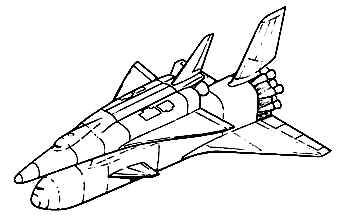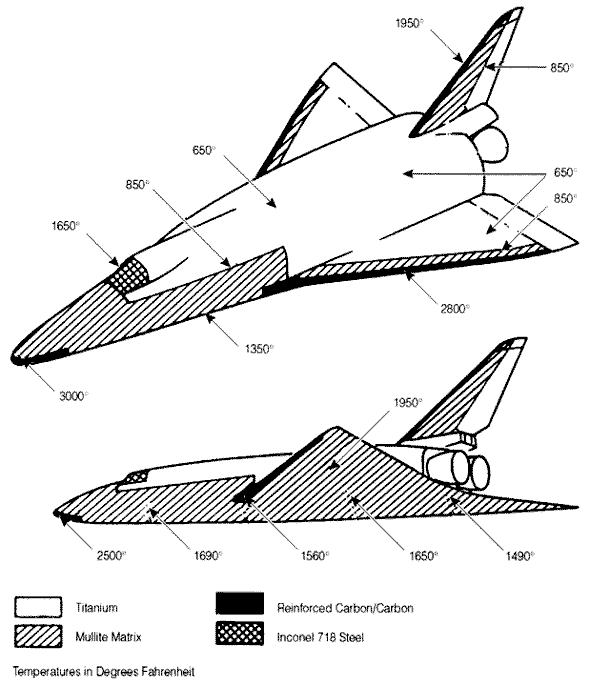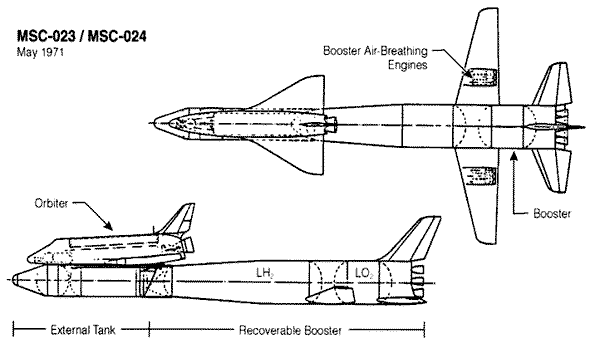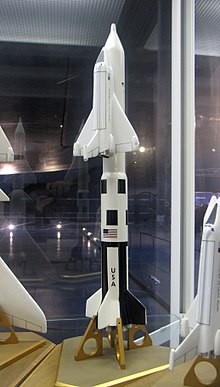You are using an out of date browser. It may not display this or other websites correctly.
You should upgrade or use an alternative browser.
You should upgrade or use an alternative browser.
The thread for space cadets!
- Thread starter hobbsyoyo
- Start date
Thorgalaeg
Deity
Was Space Shuttle inherently a bad design, too expensive, too complex too, prone to catastrophic failure or was it basically bad luck?I'm really itching to talk about the Challenger or Columbia disasters if anyone has questions.
I am sorry I do not understand the question.
My understanding is that at the time Challenger blew up at least the technical side of NASA knew they had serious safety issues with the pace of launches the admin side required. Now I wonder if a successful Challenger would kick the can down the road until another major incident or would the situation sort itself out with loosing a orbiter?
hobbsyoyo
Deity
- Joined
- Jul 13, 2012
- Messages
- 26,575
Literally all of the above.Was Space Shuttle inherently a bad design, too expensive, too complex too, prone to catastrophic failure or was it basically bad luck?
Once Apollo XI happened, Nixon was fixated on gutting NASA to pay for Vietnam. NASA said they had a plan that would allow them to continue doing missions much more cheaply by using reusable launch vehicles but their original proposals were all too expensive to develop even if the per-flight costs were low. In response to cost criticism, NASA changed the design in ways that it made it inherently more risky. Even with these changes, it was still too expensive, so NASA sought out Air Force support to cover the shortfall. Basically, NASA agreed to make even more changes to the Space Shuttle design to make it meet Air Force requirements on the agreement that the Air Force would exclusively use the Space Shuttle and therefore help fund it. These changes made the Space Shuttle even more unsafe, and in the end the Air Force pulled their support of the Shuttle, leaving it with all these features that were pretty much useless for the role it ended up playing.
So they had this overly complex design, and because it was so complex, that in turn made it much more expensive to operate than they anticipated. Still, NASA pushed ahead under the theory that if they could get the launch rate up that costs would fall and everything would be forgiven. This was the underlying context that lead to Challenger - NASA pushing ahead at full steam to meet unrealistic schedule expectations and thereby ignoring flashing red lights. As I explain in the next post, Challenger was not the first Shuttle to face this issue but it would be the last.
And! It was also extremely unlucky - previous flights had suffered the same issue but the rocket exhaust plugged the leaking hole. This too happened on Challenger, but then Challenger flew through an intense layer of atmospheric wind shear that was a bit like hitting a wall. This wind shear rocked the Shuttle hard enough that the exhaust plug came loose and fire came out like a blowtorch pointed right at the Shuttle's main fuel tank.
That is exactly what would have happened. How can I be so certain? Because that's what happened the previous X times that the o-rings burned through. Almost all of the other flights had experienced some erosion of the primary o-rings and one or two flights had suffered complete primary and secondary o-ring failure. The only reason why they did not blow up is because the rocket exhaust itself solidified in the gaps and re-sealed them. NASA and their contractors were aware of the problem but did not seem to grasp how serious it was and did not bother to implement a correction until people died.My understanding is that at the time Challenger blew up at least the technical side of NASA knew they had serious safety issues with the pace of launches the admin side required. Now I wonder if a successful Challenger would kick the can down the road until another major incident or would the situation sort itself out with loosing a orbiter?
And they did this again with Columbia. From the very first Shuttle flight, the thermal protection tiles were known to dislodge from the bottom of the Shuttle and fly off. They also knew that foam from the fuel tank would shed and impact the orbiter, making even more thermal protection tiles fly off. They had several extremely close calls, including one where a hole in the thermal tiles would have destroyed the orbiter if it had not opened up directly over a steel plate which coincidentally was able to stop plasma from entering the hole and destroying the orbiter. Just like with the o-rings, NASA knew all this was going on and opted not to fix it and kept rolling the dice until people died. And while they did completely fix the o-rings, they never totally fixed the tile issue because the basic design was so flawed that they really couldn't fix it.
So this is a lengthy post but if anyone is interested in all the ways the shuttle was a bad design, and how it became a bad design with all the political interference, I'd love to talk about it.
Last edited:
Do you think Buran had the same design problems, or shared majority of them, with the Space Shuttle? Or from technological point of view, it could be more successful?
With the benefit of hindsight, what would you do with these two projects if you were in charge of them in 80-s - close them, may be try to fix or redesign some parts?
With the benefit of hindsight, what would you do with these two projects if you were in charge of them in 80-s - close them, may be try to fix or redesign some parts?
Thorgalaeg
Deity
Another one: could ISS have been built without Space Shuttles? I know space stations are buildable without space shuttles (Salyuts, Skylab and the MIR, and the chinese one) but something as big and complex as the ISS?
hobbsyoyo
Deity
- Joined
- Jul 13, 2012
- Messages
- 26,575
It shared most of the big design problems, fixed a few of them, and likely had a bunch of problems unique to it, as all complex space vehicles do.Do you think Buran had the same design problems, or shared majority of them, with the Space Shuttle? Or from technological point of view, it could be more successful?
With the benefit of hindsight, what would you do with these two projects if you were in charge of them in 80-s - close them, may be try to fix or redesign some parts?
What Buran got wrong: It shared the layout of being a side-slung spaceplane that hangs off the booster rather than being stacked on top which makes it nearly impossible to abort during a launch. It also had the Shuttle's insanely large wings which were another liability. These two issues alone were probably the biggest flaws of the Shuttle design and Buran shared them.
What Buran got right: It did not use foam on its central rocket engine core and it allegedly had a more durable thermal protection system. The lack of foam meant there was no foam to shed and impact the orbiter. The more robust thermal protection system is also an obvious advantage, but we'll explore this point later. The fact that it did not reuse its main engines or boosters was actually probably a cost-saving feature as refurbishing these on the Space Shuttle proved to cost far more than manufacturing more for each launch due to their complexity and the lack of economies of scale in repair work versus fabrication.
Things that didn't matter between the Shuttle and Buran: Much has been made of the inherent danger of solid rocket motors because they can't be shut off in flight. There has never been to my knowledge an instance where the ability to shut down a solid rocket motor would have made any difference to the outcome of the flight. In other words, when a solid rocket motor fails, the mission fails and shutting it down would have not have fixed it.
"But liquid engines can be shut down!", yes, but usually no. For most vehicles, the loss of a liquid engine would still be the loss of the vehicle even if you could shut it down before it exploded. There are rare examples of rockets with some engine-out capabilities but even then, the loss of an engine in certain parts of the flight will still mean the loss of payload. The Falcon 9 is notable for having twice lost an engine and then clawed to orbit, but on one of those missions it still had to ditch a secondary payload into an unusable orbit.
Solid rocket boosters are also used early in flight to help a fuel-laden rocket get off the ground and gain altitude. This is the single most critical period of flight for a rocket and even for those liquid rockets with proven engine-out capability, a loss of engine within the first 30 seconds of flight is almost a guaranteed failure. So yeah, a loss of a solid rocket is an automatic failure whereas the loss of a liquid engine is "only" usually an automatic failure rather than always a failure. It's close to a distinction without a difference and for sure the explosion or even shutdown of a liquid rocket booster on Buran would have been just as deadly as it was for the Shuttle.
What we don't know: A lot.
While NASA certainly pushed out a lot of what we may consider to be propaganda about the virtues of the Shuttle, it was still developed in an open environment with a free press investigating all aspects of it. And they did! The press was at times super critical of the Shuttle, especially in the lead-up to Challenger when the Shuttle was failing to meet launch and cost targets. There were also open Congressional investigations and hearings which went over the flaws in detail.
The Buran was instead developed in secrecy and mostly kept that way. So while we can point to NASA's mischaracterizations of the risks of the Shuttle, we can also point to the blueprints that tell the truth, along with Congressional testimony and press investigations that differed with NASA's conclusions. Compare this to when retired Russian engineers boast in interviews that the Buran had a far superior thermal protection system, for example - we are less able to determine the truth behind that statement because of the closed environment in which it was developed. We do not have detailed schematics to go over, or press investigations, or anything like that. And the Buran only flew once, with many systems not installed, so we don't even have a track record to compare them with.
So with regards to the tiles, we could ask, What parameters are better? What parameters are worse? If the thermal tiles were different, then the parts which interfaced with them were also different. Did the changes required to these interfacing parts make them better or worse than the Shuttle's equivalent system? If the tiles worked in a different manner, did this require Buran to use a different flight profile - and if so, was this flight profile more or less safe than the Shuttle's? Etc, etc.
I actually believe that Buran's thermal system was better, but it's hard to tell with certainty and it also does not preclude the Buran from having its own unique and serious safety flaws which we do not and will not ever know about. I also personally think the Buran is cooler if only because it didn't kill 14 people and set an entire nation's space program back twice.
Last edited:
hobbsyoyo
Deity
- Joined
- Jul 13, 2012
- Messages
- 26,575
It could have, and it may have been cheaper than what we got due to the Space Shuttle's high launch costs. However, it would have taken much longer to build and would have been less capable for an equivalent weight.Another one: could ISS have been built without Space Shuttles? I know space stations are buildable without space shuttles (Salyuts, Skylab and the MIR, and the chinese one) but something as big and complex as the ISS?
Thanks to the Air Force, the Space Shuttle got this cavernous payload bay which was very useful for deploying giant space telescopes for looking at the stars or Russia. Those same payload bays were later exceedingly useful at deploying large diameter (and very long) space station modules. The larger each individual module is, the less you need overall, and the more efficiently you use the volume given.
One way to think about this is how all of these modules are put together. If each module has a docking port on each end, then having twice as many modules means twice as many docking ports. Once docked, these docking ports are useless as far as providing habitable volume or other capabilities. They also weigh a ton, so you lose potential payload mass to accommodate all the docking hardware.
Another way to think about this is the squared/cubed problem - as an object gets bigger, its volume increases by the 3rd power, while its surface area increases by the 2nd power. For a space station module, the surface area is the outer bulkhead of the module, which keeps air in but is heavy and otherwise not so useful. So a small module will have proportionally more of its mass dedicated to the outer walls and less to the payload compared to a larger module.
The Shuttle also had the robot arm from Canada which was supremely helpful for the task of putting together space stations. You could put an arm on say a capsule, but it would necessarily be much smaller and less dexterous compared to the Canadarm which was stowed in those cavernous payload bays.
So yup, you definitely can build a space station without the shuttle, but given the available launch vehicles of the time, a Shuttle-less ISS would have been worse off than the ISS we got.
Yeah it may have been much safer if it had been flown in a configuration more like this!
Berzerker
Deity
They say Challenger blew up because a seal froze and leaked, but I also heard it was launched with icicles hanging on it early morning in near freezing temps so Reagan could have a lunch time photo op with the crew. The connecting apparatus for the shuttle to the large fuel tank was above connecting fuel lines directly below.
dont remember if I mentioned this earlier, but there's evidence a nearby supernova triggered our ice ages 2.5 mya
https://unfoldtimes.com/supernova-b...-years-ago-and-may-have-triggered-an-ice-age/
dont remember if I mentioned this earlier, but there's evidence a nearby supernova triggered our ice ages 2.5 mya
https://unfoldtimes.com/supernova-b...-years-ago-and-may-have-triggered-an-ice-age/
Berzerker
Deity
I remember watching video of the explosion, when they powered up a bubble of ignited gas appeared between the shuttle and the tank a split second before it blew up and everything went flying off in different directions.
warpus
Sommerswerd asked me to change this
So the space shuttle was designed to have a low launch cost and it ended up being very high instead? Or did they just expect to be flying this very frequently, bringing costs down that way?
hobbsyoyo
Deity
- Joined
- Jul 13, 2012
- Messages
- 26,575
NASA wanted the Shuttle to have very low launch costs, but this would mean higher upfront development costs.
This was shot down by Nixon, so they opted for low development costs and higher per-launch costs. However, even though this would mean higher per-launch costs relative to the other option, it would still be lower launch costs than expendable vehicles. That was the theory anyways.
In the end they got neither. Constant political interference meant the Shuttle's design grew more and more complex which drove up development costs. This complexity also meant it cost a lot to refurbish between launches and because it cost so much/took so long to refurbish, they never got to a launch cadence which would have allowed them to amortize development costs.
This was shot down by Nixon, so they opted for low development costs and higher per-launch costs. However, even though this would mean higher per-launch costs relative to the other option, it would still be lower launch costs than expendable vehicles. That was the theory anyways.
In the end they got neither. Constant political interference meant the Shuttle's design grew more and more complex which drove up development costs. This complexity also meant it cost a lot to refurbish between launches and because it cost so much/took so long to refurbish, they never got to a launch cadence which would have allowed them to amortize development costs.
hobbsyoyo
Deity
- Joined
- Jul 13, 2012
- Messages
- 26,575
To this day no one can say with certainty how much a shuttle launch really costs because NASA got really skilled at obfuscating costs to keep their program alive. They are doing it now with the SLS rocket and have been attacked by the various budgetary watchdogs in the government for it. They get away with it in part because the shuttle and SLS are amazing job programs for poor, rural states.
Constant political interference meant the Shuttle's design grew more and more complex which drove up development costs.
Is it possible to say how a shuttle design would have looked like without the political interference?
hobbsyoyo
Deity
- Joined
- Jul 13, 2012
- Messages
- 26,575
Not with certainty but there were a few favored layouts that NASA took very seriously before rejecting them early on due to said interference.Is it possible to say how a shuttle design would have looked like without the political interference?
The leading designs had stubby wings and used a lot more metals in the thermal control system to create what is called a 'hot structure', wherein you use the frame of the vehicle itself as a heat sink to partially deal with re-entry heating. Most of the variations they looked at would have been small shuttles stacked on top of enormous rocket planes which could have flown themselves back to the launching area for 100% reusability.
Spoiler :



There were a couple of variants which would have stacked the shuttle on top of a rocket such as a Saturn V first stage but these were probably less likely to be adopted.
Spoiler :

(I have seen this model in person it's dope af)
An influential designer named Max Faget had a lot of sway over the early shuttle design period and likely would have had one of his stubby-wing proposals accepted had the Air Force not gotten involved.
The USAF made a bunch of demands which dramatically changed the shuttle design, the most extreme was the demand that the shuttle have significant 'cross-range' capability. That is to say that the USAF wanted the shuttle to be able to cross several thousand kilometers during re-entry. When you launch east-to-west, your first few orbits will come back over the launch site within just a few dozen/hundred kilometers. This means that within those first few orbits, you can relatively easily re-enter and land back where you launched from. If you launch into a polar orbit (n-s or s-n), this is not true because after your very first orbit the Earth has rotated under your orbit and you are now hundreds of miles from the launch site.
The USAF had this hair-brained idea that they would launch the Space Shuttle from California into a polar orbit where it would immediately release a spy satellite or retrieve an old spy satellite and then come back for a landing within only one or two orbits. Because this would have been a polar orbit, they needed huge wings to give it enough lift to do a cross-range re-entry and land back in California. This whole idea is insane on the face of it, but it was a primary design driver in order to get USAF support which in the end evaporated anyways.
Anyways, it's impossible to say with certainty which design would have won out because NASA rapidly ruled out many viable designs early on in reaction to political interference and out of imaginary cost concerns. I say imaginary because NASA kept being told they would get no money to design and build the Shuttle but in the end with all the overruns they ended up getting way more than they originally budgeted for and wasted a lot of it.
Here's a good mega-long read on the shuttle design process:
https://space.nss.org/the-space-shuttle-decision-chapter-8/
The USAF had this hair-brained idea that they would launch the Space Shuttle from California into a polar orbit where it would immediately release a spy satellite or retrieve an old spy satellite and then come back for a landing within only one or two orbits. Because this would have been a polar orbit, they needed huge wings to give it enough lift to do a cross-range re-entry and land back in California. This whole idea is insane on the face of it, but it was a primary design driver in order to get USAF support which in the end evaporated anyways.
Why would they have wanted that? Was the idea to maximize uncertainty about the spy satellite's orbit for anyone tracking the launch?
Similar threads
- Replies
- 4
- Views
- 793
- Replies
- 7
- Views
- 1K
- Replies
- 5
- Views
- 4K
- Replies
- 13
- Views
- 2K
